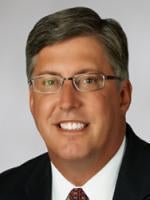The Original Equipment Suppliers Association (OESA), the leading U.S. trade group representing automotive suppliers, convened its 2016 Annual Conference on November 2nd under the theme: “The Industry at a Crossroads.” The title reflects two basic crossroads facing the industry today: the crossroads of the evolution to connected and autonomous vehicles, and the crossroads of an industry whose current production cycle is peaking in North America.
Industry Outlook
The afternoon session featured a panel discussion of “The Outlook of the Industry,” moderated by Charles Chesbrough, Senior Economist at OESA. Other speakers included Sarah House, Vice President and Economist, Wells Fargo Securities, LLC; Emily Kolinski Morris, Chief Economist, Ford Motor Company; Michael Robinet, Managing Director, IHS Markit; and Paul Traub, Senior Business Economist, Federal Reserve Bank of Chicago.
 Chesbrough began by noting that the OESA Supplier Barometer Index had reached its lowest level in four years in September 2016, to a number of 48 (with above 50 representing relative optimism and below 50 representing relative pessimism). He contrasted this number to numbers in the mid 60’s in September 2013. Factors contributing to the increased pessimism include concerns about the economy, poor sales of certain vehicle platforms, and uncertainty about the outcome of the U.S. election and its potential impact on trade policy.
Chesbrough began by noting that the OESA Supplier Barometer Index had reached its lowest level in four years in September 2016, to a number of 48 (with above 50 representing relative optimism and below 50 representing relative pessimism). He contrasted this number to numbers in the mid 60’s in September 2013. Factors contributing to the increased pessimism include concerns about the economy, poor sales of certain vehicle platforms, and uncertainty about the outcome of the U.S. election and its potential impact on trade policy.
Traub, of the Chicago Fed, marched through a series of slides evidencing an economy that is growing only slightly (projected at about 2% for 2017 with a longer term Fed projected trend line at 1.8%), personal consumption which is slowing and anemic gains in personal income. He reported a Seasonally Adjusted Sales Rate of 17.9 million units, a number which he noted is also peaking. (Traub and House predicted lower or slightly lower U.S. vehicle sales for 2017, while Morris and Robinet predicted sales in 2017 to be “even” with 2016.) Best case consensus scenario though: we are peaking or have peaked, as we reach the later stages of the current economic cycle, which has run for nearly 7-1/2 years.
House, from Wells Fargo, reiterated some of the same viewpoints as Traub, in addition to noting that real income growth will be dampened by inflation in 2017, auto credit standards are tightening as demand for credit is slowing, vehicles will be coming “off lease” in record numbers over the next couple of years, and incentives which are near all-time highs and are expected to increase faster than sales in 2017.
Morris, of Ford, offered a more tempered and optimistic view noting that the number of vehicles per 1,000 people in the U.S. has fallen from historical highs; that scrappage (replacement) rates have been increasing as per vehicle miles increased in 2015; and that the number of households buying a vehicle at retail is at 11.5%, well below the 13.9% historical peak of 2000. All these factors may point to an auto market that has some remaining steam left in it. Morris also noted the widely varying estimates of the impact of new mobility on U.S. market sales, and the many unanswered questions that remain and which will vary among consumers (such as “will consumers share rides or share cars?” and “what is the motivation of the consumer: lower cost of ownership, reduced travel time or improving the travel experience?”).
Robinet, of IHS, encouraged everyone to “stay calm” even as we near a plateau in the North American automotive market. Robinet counseled that product mix is currently and will remain a key driver of profitability, with SUVs, trucks and especially crossovers continuing to rise in response to consumer preferences, while sedan sales are falling. He also noted that the geographic center of North American production will continue to move South at the rate of about 31 miles per year between 2015 and 2025 (from Jackson, Tennessee to Oneida, Arkansas!) as more production comes on line in Mexico. At the same time, the automotive design and engineering center of gravity in North American is expected to continue to be in Detroit, in part to the “hubbing of engineering talent” that has been assembled in Detroit. Robinet’s biggest red flag is a “looming cost cliff” that may alter the market, as the affordability of vehicles continues to be more challenging as increased electrification, light weighting and safety contenting is built into vehicles, creating a mandate for additional cost reductions by suppliers to maintain the delicate balance of affordability that is expected to exist.
Summary
Bottom line of the panel: the industry outlook remains strong by historical standards, while a peak or plateau has clearly arrived or is on the near term horizon. When asked about downside scenarios, the consensus of the panel was that, absent an unforeseen shock, the next pullback will not be as severe as the 2008-2010 recession which was precipitated by a nearly unprecedented financial crisis. So, let the good times continue to roll for a while, while automotive suppliers build increased caution into their forecasts and adjust their strategies to respond to these trends.




 />i
/>i